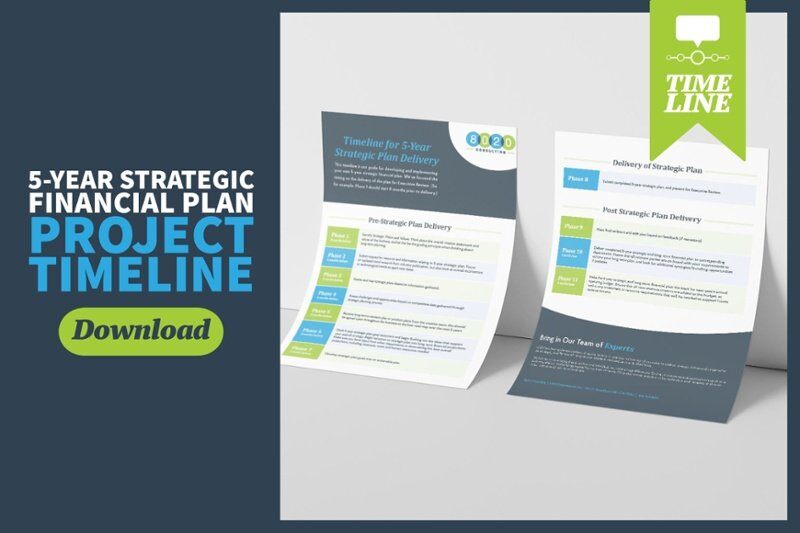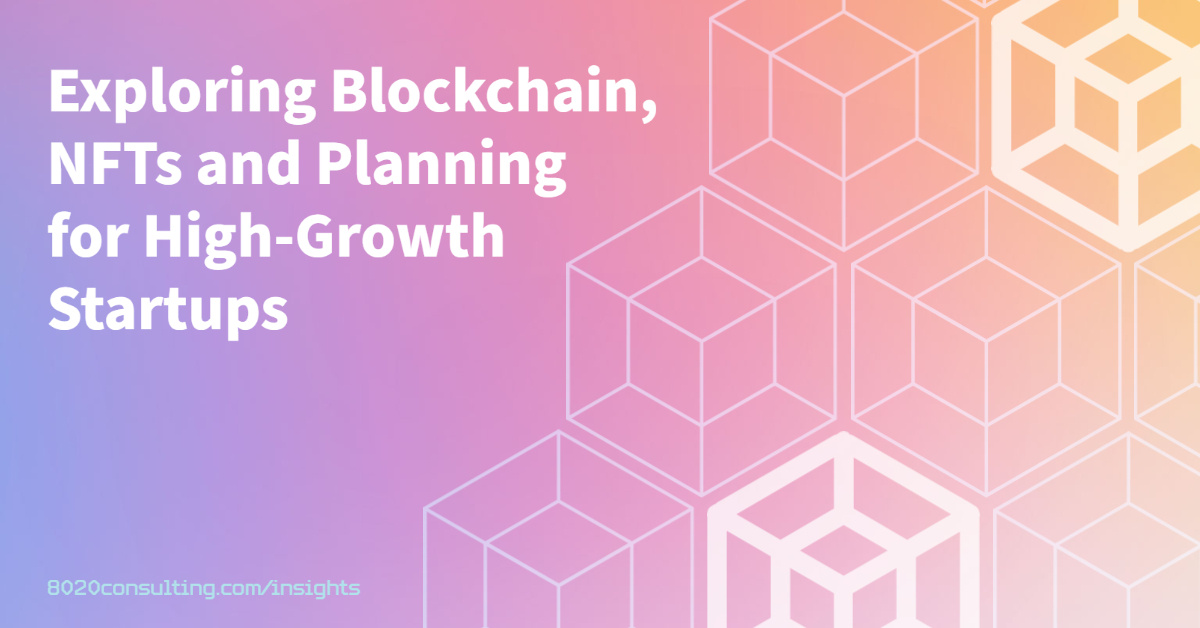Over the last five years, dozens of digital games have been created by studios that utilize blockchain and non-fungible token (NFT) technology. This has generated a growing consumer segment and heightened demand, even as the industry is still very much in the early innings. These technologies also create a familiar circumstance for finance professionals, specifically those who engage in forecasting exercises for early-stage, high-growth companies. How are they to incorporate and model technologies that are in the infancy of their lifecycle? In this blog, I will provide an overview of the blockchain and NFT technology sector, cover some unique opportunities and challenges and discuss best practices for high-growth startups to employ for long-range planning.
Let’s first define some terms, starting with blockchain and NFTs.
What is blockchain?
Blockchain enables businesses to verify identities, reduce fraud, reduce costs and protect sensitive customer data. In essence, the blockchain acts as a trusted ledger – a digital ledger of transactions where the task of verification is distributed across the entire computer network on the blockchain. Blockchain-based content is therefore decentralized across a vast network of individuals, versus traditional models where assets are owned by a single party or central bank. Transactions conducted in the blockchain are verified through a network consensus model and have inherent transparency with all users.
The development of a blockchain and the digital economy that flows from it enables individuals and businesses to verify scarcity and create a clean chain of title in the record of ownership of digital assets.
What are non-fungible tokens (NFTs)?
NFTs are digitally based assets verified on the blockchain that are indivisible, ownable and tradeable. They are also characterized by scarcity, which is what makes them unique and valuable. Digital games are the most likely vehicles to carry NFTs into the mainstream and reach the widest potential utilization by making them a central component of gaming economics going forward.
Growing Popularity of NFTs is Changing the Gaming Landscape
Last year, venture capital firms invested more money than ever into high-growth startups in blockchain, crypto and NFT, reported to be a record $33 billion in VC funding. The amount of cash flowing into the sector exceeded all prior years combined, driving up valuations of emerging companies in the space to never-before-seen levels.
Blockchain has become a serious disruptor of a host of industries, including technology, healthcare, gaming, financial services and others. IBM announced it is investing more than $200 million in research, and the vast majority of US- and European-based banks are pursuing blockchain applications as well.
The growing popularity of NFTs cannot be ignored. In terms of gaming, the early adoption has been driven by shifting economic power from producers to players. What’s more, the original creator can earn royalty revenue with each subsequent sale.
These assets can also be transferred outside the game economy, in effect making an intangible asset tangible. Numerous marketplaces exist which facilitate the issuance or purchase of NFTs by use of digital wallets and currencies. NFTs have also been made popular in applications unrelated to gaming, including art, music, and sports.
NFTs have truly unique characteristics making each NFT distinct from the next, including size and developer. As a result, NFTs cannot be interchanged with another asset, unlike cryptocurrencies such as Bitcoin, where one unit of Bitcoin is identical to any other. (This is what makes Bitcoin a fungible asset.) The same attribute describes fiat currency, such as the U.S. Dollar, as any dollar in circulation is interchangeable with any other.
High-Growth Startup Case Study: Mythical Games
With high potential for profit-making in the NFT space, several promising startups have been launched to capitalize on the opportunity. During a recent consulting engagement with LA-based Mythical Games, I had the opportunity to work closely with the head of finance to craft a long-term financial plan for the business, and document lessons learned and best practices for finance which I will share momentarily. But first, an introduction.
Mythical Games is one of the first companies to bring to market playable NFTs, using blockchain and digital ledgers, allowing players to earn money during game play and simultaneously providing players a marketplace where game characters can be bought and sold and customized to each player’s preferences.
Mythical is also looking to license its unique platform to other gaming companies to allow those partners to create their own content with playable NFT characters with the similar playable and sellable attributes. Mythical offers players a “play-to-earn” attribute, empowering gamers to make money from their time spent playing. As the playability of the games improves, the perceived quality gap between NFT games and traditional AAA games will shrink.
Financial Forecasting Best Practices for High-Growth Startups in Blockchain and NFTs
There are unique challenges and opportunities for finance professionals operating within high-growth startups in new and fast-growing industries such as blockchain and NFT gaming. Forecasting with limited historical information either internally or industry-wide brings about the need for creative yet analytically sound methodologies. For example, how does one look 3-years into the future during a long-range planning exercise when relevant historical data is either quickly outdated or nonexistent?
Indeed, a lot of changes have occurred as well in traditional media with the accelerated adoption of streaming. Even so, Disney, Universal, Warner Media and the other major studios have an advantage that smaller blockchain gaming startups do not have – namely, the existence of long-standing IP with readily available comps to leverage for forecasting purposes.
The reality is that more iterations vs. prior versions will be required during the forecasting process for emerging blockchain and NFT technology companies as the learning curve accelerates.
Developing KPIs for a Young Blockchain Gaming Company
Opportunity arises for financial professionals to craft key performance indicators based on whatever available data are available and relevant. In the blockchain gaming space, common KPIs include:
- Average Revenue per Active User
- Average Revenue per Paying User
- Average Daily Active Users
- Average Users per Month
- Take Rate, Burn Rate, Cash Balance
Over the span of a three-year outlook, we can expect to see broad increases in the number of users as the marketplace becomes available to all players who wish to participate. Emerging companies in the industry should focus their efforts on building or funding a targeted portfolio of game launches over time that provide consistent recurring revenue with specific P&L assumptions by project based on type, release date, marketing plan, participation strategy and developmental resources required.
Consistent growth over time allows a blockchain startup to increase scale in content, transactions, customers and data, all of which can serve to boost long-term revenue, market share and margins, while hitting established KPI targets.
Scenario Analysis for High-Growth Startups in the Absence of Robust Historical Data
It is recommended that one-year forecasts and longer-range plans incorporate scenario analysis as a powerful alternative to more traditional forecast methods. It is helpful to create categories such as low, base and high cases of performance achievement. Then, assign generic revenue assumptions to each scenario. Also ensure that revenue and expense trajectories are in line with recent industry trends.
One sound approach with gaming and entertainment companies operating in the blockchain space is to assume a certain percentage of projects are hits (i.e., successes) versus misses (i.e., failures) and define hits and misses by an ultimate or lifetime level of gross revenue. An added layer of sophistication is to raise the hit scenario revenue threshold in later forecast years to account for enhancements in productivity as the young startup matures. This approach will also naturally align with future stretch goals.
Expect Labor Efficiency as a New Industry Matures
On the expense side, focus on forecasting the main spend priorities as articulated by leadership, including headcount, outsourcing, marketing, G&A, etc. In blockchain or NFT startups, modeling headcount accurately (generally ramp ups) is crucial to producing reasonable operating income forecasts.
Specific to headcount, as a young gaming company develops and releases more content, conceivably there should be meaningful resource efficiency. It is reasonable to assume increasing heads over time as the number of deals increases but decreasing incremental heads per deal/acquisition. Scale not only drives decreases in incremental headcount per deal, but also drives revenue growth and margin expansion.
Finance professionals operating in this exciting, fast-growth environment should account for all these factors when building out the long-range forecast.
Learn More About Planning for High-Growth Startups and Organizations
If you interested in learning more about planning, we invite you to download our 5-year strategic planning timeline below! And of course, if you need FP&A support, you can contact us to explore how our team of 115+ Consultants can help.

